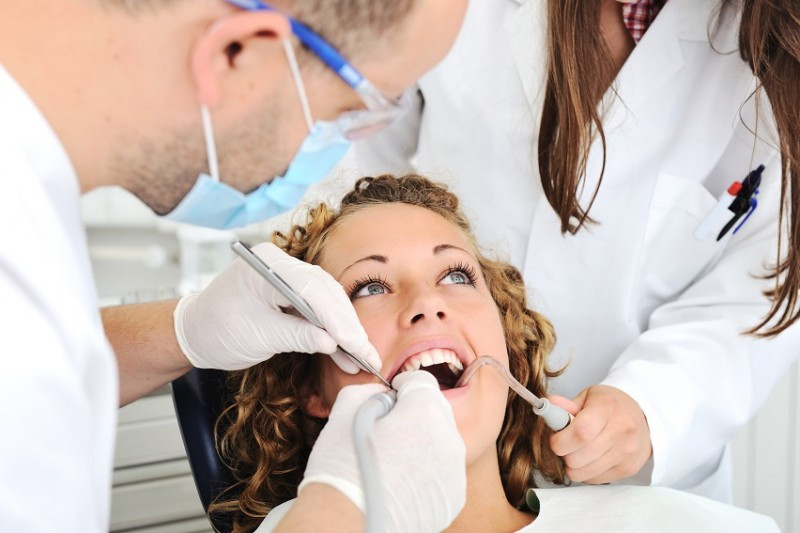October is Dental Hygiene Month, meaning now is as good a time as any to dig out your toothbrush from whichever drawer you forgot you put it in. Next, find a tube of toothpaste with at least a smidgen of fluoride-laced toothpaste left in it. Then take a detour from your favorite social media page to go and Google 'flossing' so you can learn what it is and how it works. If you already have those bases covered, good for you! If cleaning your teeth has become a lost art, however, it's time to clean up your act . . . and you need to start by brushing and flossing all that enamel, relentlessly. Think of it this way: five minutes a day keeps the dental surgeon away, and allows you to chew your food with confidence. Calculate those five minutes this way: that's two minutes twice a day for brushing your teeth, and a minute a day to floss. Two other numbers to keep in mind: one and six. Make an appointment to see your dentist once every six months for a checkup, to include x rays and a cleaning. Proper dental hygiene is much more than hastily, absentmindedly running a brush over your teeth to broom away food crumbs, chunks and remnants. Here are some things to drill into your head to, hopefully, keep the dentist's drill away from your mouth:
- Proper dental hygiene begins with eating right. That not only means cutting way back on sugary foods but also avoiding starchy stuff, such as potato chips, that stick to your teeth. Be careful about snacking on things like crackers and breadsticks, and you might also want to avoid dried fruits and raisins. That's straight from webmd.com. Snacks healthier for your teeth include vegetables, fruits (dried fruits and raisins excluded, apparently), and low-fat or fat-free cheese. (Oh, the irony of it all: here we are celebrating Dental Hygiene Month, and the month ends with a day devoted to gorging on candy. Go figure.)
- Tobacco use, to include smoking and smokeless tobacco, puts you at a higher risk for gum disease and oral (mouth) cancer. Alcohol in excess also carries with it a higher risk of mouth cancer.
- You are aware of plaque and what relevance it has for your teeth and gums, right? Plaque is a sticky bacteria-filled substance that forms on your teeth; it's hard to see and it can contribute to tooth decay or gingivitis (inflammation of the gums). Regular brushing and flossing can help rid your teeth of plaque. You might consider extra measures such as an electronic toothbrush, especially one with bristles that move in a circular motion, to help get plaque and tiny food articles out from where your gum line meets your teeth.
- When flossing, go between all of your teeth, side to side (all the way, even those hard to reach), upper and lower, and go all the way up to your gum line. Move the floss up and down against the tooth, wrapping the floss in a C shape around each tooth and on each side.
- By the way, if floss proves too unwieldy to use, think alternatives such as dental picks, pre-threaded flossers and water flossers. Want to know more about each? Discuss with your dentist or hygienist.
- Rinsing is another important cavity deterrent, not just for a fresh breath but to help with killing unwanted bacteria. Rinse with an antiseptic mouthwash or a fluoride rinse, or both—these help prevent tooth decay and gum disease. Just take a swig and swish it around, for at least 30 seconds if you can stand it. Note: the American Dental Association cautions against allowing children under six from using a fluoride rinse—swallowing it can harm a child.
- Toothaches are usually an indication you need to see your dentist immediately. Other signs include gums that bleed when you brush, gums pulling away from your teeth, persistent bad breath, loose teeth and unusual sensitivity to hot and cold.
- Don't just brush your teeth—get your tongue, too.
- Give your teeth the minerals they need. Key minerals include calcium, magnesium and phosphorous for strong teeth. Vitamins are also important so look to Vitamins A, D, E and K.

